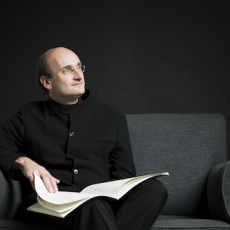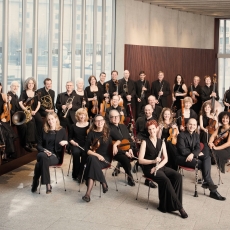Francesco Piemontesi, SCO & Andrew Manze - Mozart: Piano Concertos 19 & 27 - The Classic Review
This album has an interesting connection to Francesco Piemontesi and Andrew Manze’s 2017 release with the Scottish Chamber Orchestra, which featured the K537 “Coronation” concerto (reviewed here). Piano Concerto No. 19 (K. 459) is sometimes called the “Second Coronation”, presented for Emperor Leopold II crowning in 1790. Where the D major is majestic and buoyant, the F major is more elegant.
Piemontesi has an effortless and inviting fluidity in K459, yet the first movement misses an element of sprightly humor that occasionally sneaks in. Turn to Mitsuko Uchida’s late 1980s recording with the English Chamber Orchestra (less so in her 2014 remake) to find a nice balance of these qualities. A recurring aspect that unifies the movements is an ongoing conversation between the soloist and players of the Scottish Chamber Orchestra. Nowhere better is this portrayed than the second movement Allegretto, which features some beautiful interchanges between the flute and piano. The performers’ seamless communication allows us to appreciate the rare sensitivity Mozart often presents in his middle movements. The only regret here is that the oboe sounds oddly muted: its increased presence would surely add to the intricate conversation. The finale Allegro Assai, however, makes up for what was previously lacking: the emergence of a spirited personality. Piemontesi has impressive articulation, bolstered by Manze’s energetic leadership.
The B-flat major concerto (K. 595) is one of Mozart’s most exploratory – a testament of pushing the genre’s boundaries while using more modest forces than his previous Concertos. The booklet essay by Simon P. Keefe determines that this Concerto is the composer’s effort to “(…) reinvent his Concerto style” instead of implementing “(…) a reticent, nostalgic and resigned departure.” Piemontesi and Manze apparently share this view, and their performance is more outspoken than Alfred Brendel and Charles Mackerras with the same orchestra.
The first movement of K. 595 carries on a collaborative theme from the previous concerto. Sections like 3:51-4:21 show skillful and nuanced communication between the piano and flute; moments later, a crisp rhythmic precision in the string pizzicatos buoys the soloist. One outstanding aspect for Piemontesi here is his ability to create beautiful gradations of piano: the subtleness in his softer dynamics still possesses a distinct, bell-like clarity.
Observing the tradition of improvisation, Piemontesi adds some interesting harmonies in the left hand as well as an ascending chromatic scale to the original monophony (5’33”), as Mozart himself likely did. In the Larghetto, the orchestra contours its melody nicely to bring out the expansive writing. The piano score, by contrast, is relatively minimalistic, but Piemontesi adds his own ornamentation to create a tasteful variety across repeated phrases. Unfortunately, the final Allegro is less successful, being a bit too fussy with ornaments, paradoxically preventing the movement from its refreshing effect.
The A major Rondo is a well-placed intermission between the two larger works. Written around the same time as some of Mozart’s earlier concertos (11-13), it features lovely playing from strings, whose lean yet rich textures we can enjoy from the start. Another particularly lovely aspect here is that both pianist and orchestra create different characters with each return of the main theme. Piemontesi’s warm tone comes through for a delightful listen.
Nothing gets lost in the sound image, which can be too much of a good thing. At times, it overly favors either the orchestra or soloist and regretfully hampers the delicate balance that the performers establish throughout. The liner notes about both concertos are informative from the historical and musical standpoint, but a description of the Rondo is missing.
The Mozart Pianos Concertos remain some of the most musically challenging repertoire for pianists today, and the two presented here are no exception. Even with occasional misses, Piemontesi puts forth a solid effort that makes it worth the listen.



